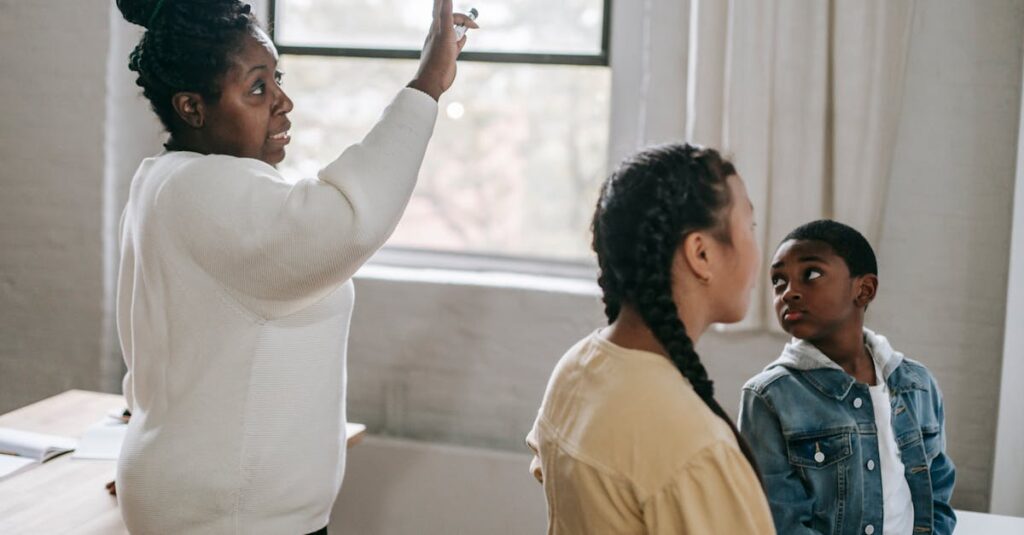Why Easter is Egg-citing for Kids
Embracing Easter is more than just plastic eggs and chocolate bunnies. It’s about introducing the joy of Jesus’ resurrection to little ones. Now, I know what you’re thinking: ‘How can we engage their wiggly attention spans?’
Start by relating Easter to something familiar, like talking about spring. Spring’s vibrancy mirrors new life, just like Jesus brings new life to us! Keep it simple, incorporate a little storytelling magic, and sprinkle in some humor. Once, I convinced my nephew that Jesus had the best hide-and-seek skills, coming back after three days!
Kids love stories, and making them laugh ensures they remember. So, let’s dive into how we share these precious truths with humor and heart.
Here are some fun ways to celebrate and teach kids about Easter:
- Create Easter-themed crafts that symbolize new life, such as decorating egg ornaments.
- Share stories about the resurrection in a playful manner that captivates their imagination.
- Organize an Easter egg hunt with chocolate bunnies, making it both fun and spiritual by including small scriptures inside some eggs.
- Utilize humor in your storytelling – kids resonate with laughter!
Remember, the goal is to keep their attention while sharing the profound message of Easter in a fun and memorable way!
The Resurrection Story Simplified
Simplifying the resurrection story for preschoolers means distilling it to its core message: love and new life. With colorful picture books or felt board stories, create a vivid narrative. I recall one Easter where my niece and I acted out the story using plastic figures. Jesus (in Lego form) was obviously the hero!
Avoid heavy theological terms. Instead, say things like: ‘Jesus loves us so much he came back to life!’ Craft these moments into teachable nuggets that resonate with them. Their excited questions will blossom into meaningful conversations.
Get ready for them to eagerly share with others what ‘getting back on our feet’ means.
Why Bunnies and Eggs Matter!
Ever wondered why Easter symbols are bunnies and eggs? Both represent new life and abundance, paralleling the resurrection! To make this relatable, I once told my niece her Easter bunny was like a superhero, spreading hope and joy silently. Suddenly, those bunny ears held hidden meaning, and eggs were treasures representing new life—a bit like a superhero having hidden powers!
These symbols capture imagination, fostering curiosity. Break the ice with a playful egg-and-spoon race or go on a bunny scavenger hunt. Through joy-filled activities, kids naturally connect with the broader meaning of Easter.
Embrace the Easter spirit and explore the deeper significance behind these cherished symbols to create meaningful memories!
Turning Challenges into Faith Lessons
Talking about resurrection naturally leads to discussing emotions like joy but also confusion or fear—especially with preschoolers. How do we handle the questions? Turn these moments into teaching opportunities.
When my nephew felt sad about the story of the crucifixion, we focused on the happiness of the resurrection. It opened up conversations about feelings and how they change. Teaching that emotions ebb and flow can be empowering.
Encouraging Emotional Expression
Encourage kids to express what they feel about the story. Doing so nurtures empathy and understanding, linking emotional lessons to the heart of the Easter story.
Key Takeaways
- Emphasize the joy found in resurrection over sadness.
- Use stories to foster discussions about feelings.
- Teach that emotions can change and are a normal part of life.
- Encourage children to share their feelings to build empathy.
Get Creative with Easter Activities
Engage preschool creativity with Easter crafts. Interactive activities bind lessons with joy. From making ‘resurrection rolls’—sweet rolls with marshmallows that ‘disappear’—to crafting Easter gardens with soil and seeds, such activities reinforce the story’s meaning.
Crafts become conversation starters. I remember being out-glittered by my niece as we decorated paper eggs. These moments turn learning into a celebration. Invite children to draw or act out Easter stories to solidify their understanding.
Parents, your involvement in these activities makes learning lively, fun, and most importantly, memorable!

